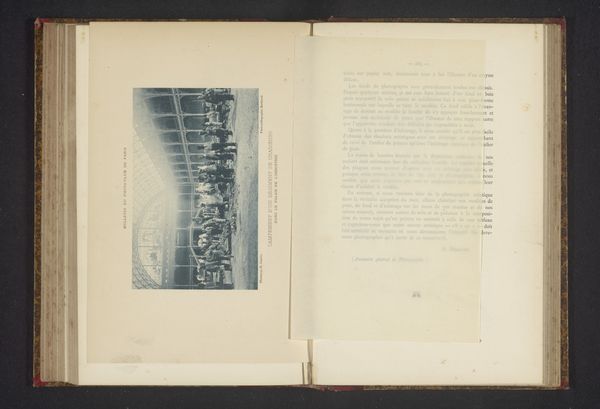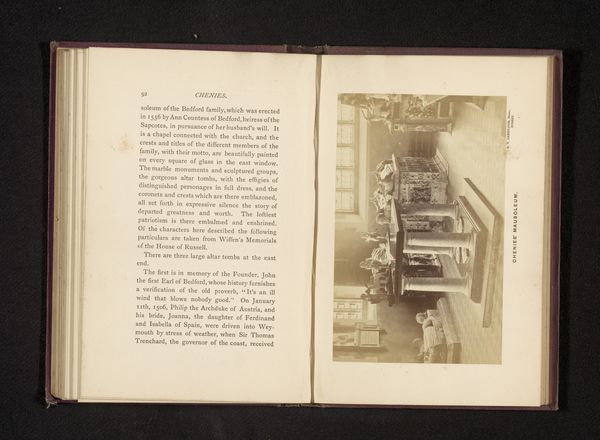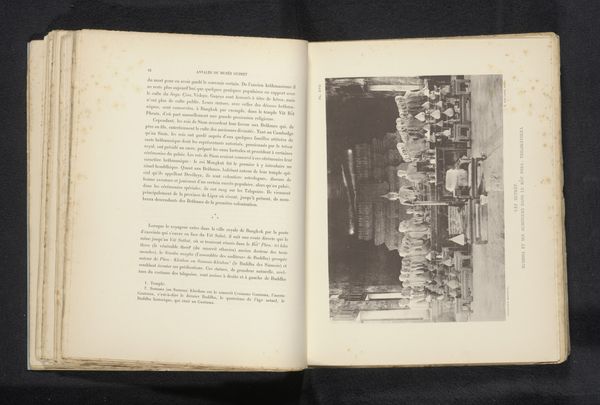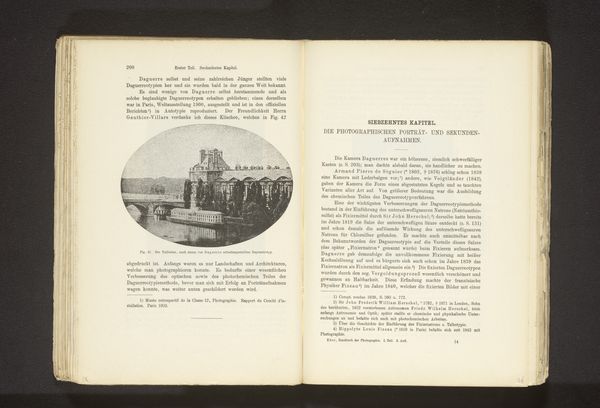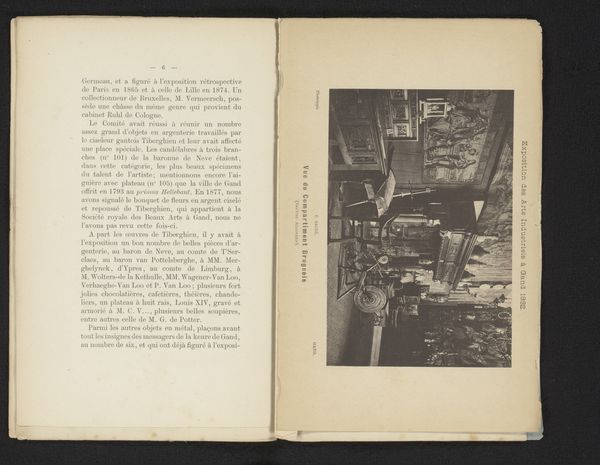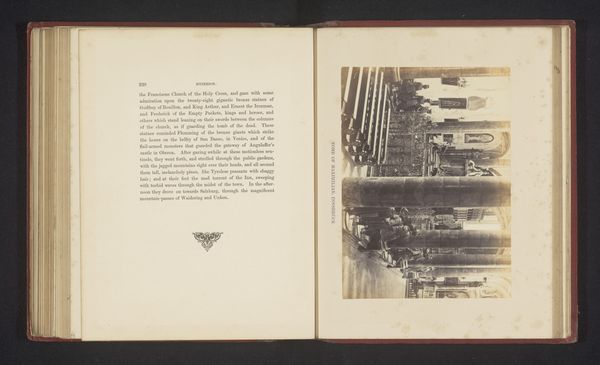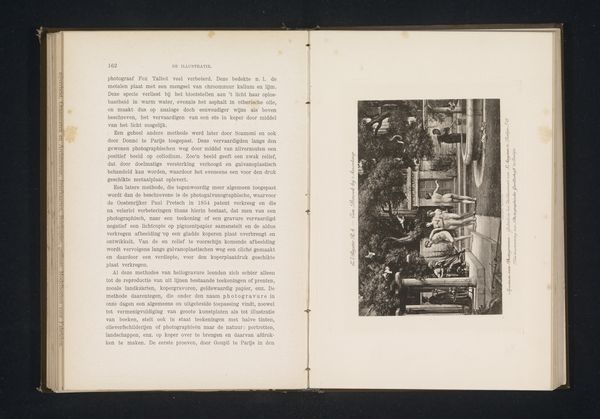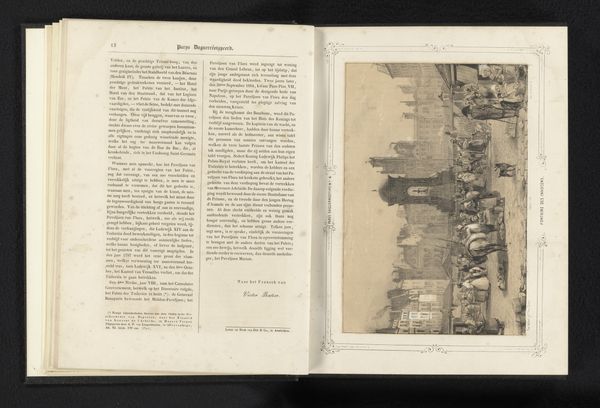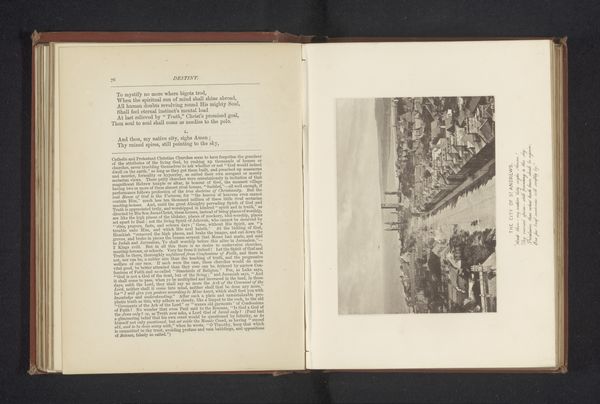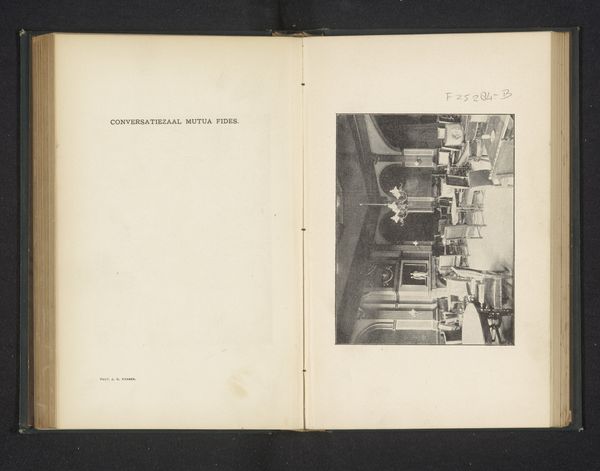
print, photography
# print
#
photography
#
cityscape
Dimensions: height 143 mm, width 222 mm
Copyright: Rijks Museum: Open Domain
Curator: Looking at this black and white print entitled "Gezicht op de Vismarkt in Doornik, België," which translates to "View of the Fish Market in Tournai, Belgium" by L. Duchatel and dating from before 1864, I’m immediately struck by how orderly the chaos of a marketplace appears to be. Editor: Orderly chaos is right! The sharp detail for a print, especially an older one, is incredible. You can almost smell the river and the day's catch. How was this scene rendered back then? Curator: Duchatel utilized the relatively new medium of photography, enabling a detailed representation of the cityscape, before rendering it in print form. This work really captures a pivotal time when cities were expanding and modernizing, shaping public spaces. I wonder if the placement of the fish market influenced any zoning and development policies at the time? Editor: Fascinating! So, photography informs printmaking. It highlights the democratizing potential of these reproduction techniques. We’re seeing an everyday scene being elevated. The artist is immortalizing labor— the unseen hours of work that got that fish to the market that morning. You know, I notice, where’s the market? Did that space transition into something else entirely? Curator: The bustling energy is evident even in the monochromatic image. It provokes a certain melancholy, though. Given this artwork, its original context was actually that of inclusion inside an older printed book, which also contributes to my understanding and appreciation of the artwork. This lends to understanding the artist’s interest in documenting an early form of urban commerce. Editor: The melancholy probably stems from its material format; a memorialized moment inside the book form, which has been untouched by time. We are witnessing a bygone labor of urban life through the confluence of photo-printing. Curator: Absolutely. This fusion of medium speaks to art’s vital role in reflecting and shaping how we perceive the social sphere and our place within the urban context. It's an era defined by photography's democratization of art production. Editor: Right! I'll be thinking about this in relationship to work, materiality, and photography— how they have intertwined to transform cities in the past and continue today.
Comments
No comments
Be the first to comment and join the conversation on the ultimate creative platform.
